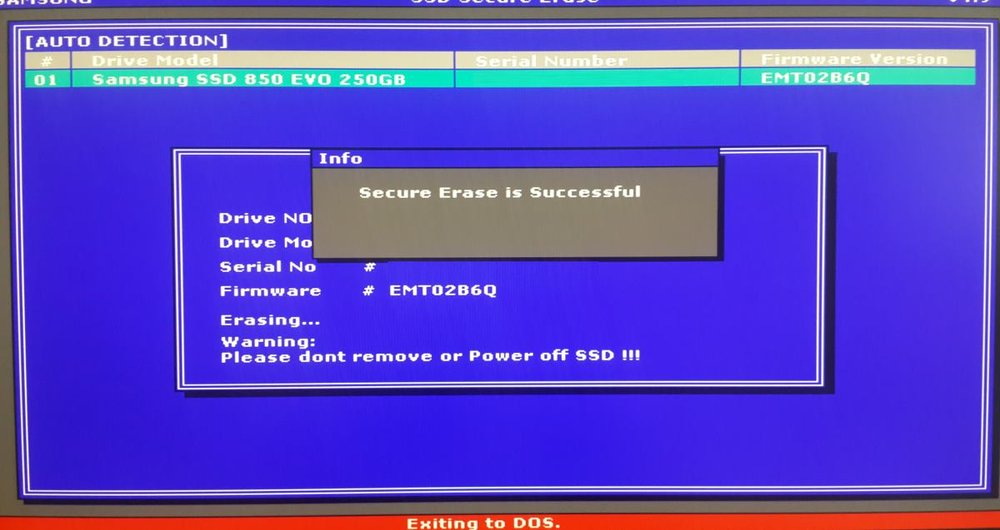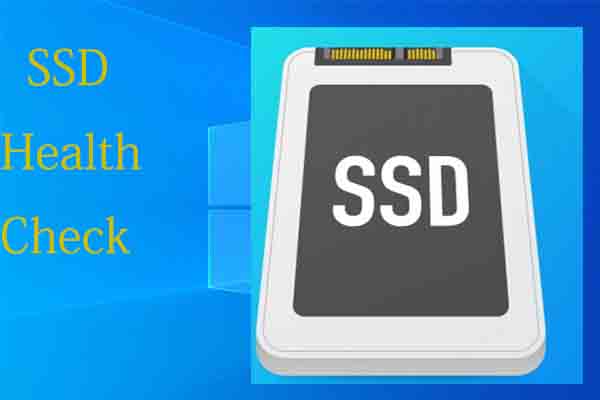
- #Samsung secure erase dos install
- #Samsung secure erase dos windows 10
- #Samsung secure erase dos software
- #Samsung secure erase dos plus
- #Samsung secure erase dos windows
#Samsung secure erase dos windows
Boot to windows (at this point Magician will still show "Ready to Enable")ħ. Boot to "Secure Erase" and erase 970 EVO Plusĥ. Reboot to UEFI (bios), enable Secure Boot, disable CSMĦ. Reboot to UEFI (bios), disable Secure Boot, enable CSM (otherwise "Secure Erase" won't boot)Ĥ. In Magician create bootable USB with "Secure Erase"ģ. In Magician switch "Encrypted Drive" from "Disabled" to "Ready to Enable"Ģ.
#Samsung secure erase dos plus
"Block SID" is now disabled, and I can manage 970 EVO Plus in usual way:ġ.

$tpm = gwmi -n root\cimv2\security\microsofttpm win32_tpmĪfter running these commands as Admin and REBOOT I was presented with such screen:
#Samsung secure erase dos windows 10
However, I was able to disable "Block SID" with those commands in Windows 10 powershell: Now, on some MB this can be done in UEFI (BIOS). To enable "Encrypted Drive", I had to temporary disable "Block SID". And without that - BitLocker will not see Your SSD as being "Hardware-Encryption capable".

While it is ENABLED - You can not manipulate Security Features of SSD, hence You can not set "Encrypted Drive" to ENABLED. It seems what these newer Samsung SSDs are respecting "Block SID" setting in MB UEFI.
#Samsung secure erase dos software
But I guess discrete TPM is not really a must have for enabling HW encryption - most likely PTT (think of it like UEFI software TPM) would also work. I do have discrete TPM inserted into MB header and I'm using it. My MB is Gigabyte H370 AORUS GAMING 3 WIFI (latest F14e BIOS). But 970 EVO Plus had stuck on "Ready To Enable" in Samsung Magician, and as a result BitLocker was unable to utilize Hardware Encryption on this drive :(. I also do have 3 more SATA SSD in my machine - Samsung EVO 850, EVO860 & Crucial MX500 - all 3 are with enabled Hardware Encryption. I was dealing with same issue for last two weeks, after inserting brand new 970 EVO Plus into my machine (FW Version 2B2QEXM7). I don't know if it's a Samsung problem, but it happens on completely different motherboards. I can only do it on my HP 820 G3 that doesn't even support that feature.īTW is not just Asus, I have the exact same problem on a HP 830 G5 that does support Bitlocker eDrive, but after doing a secure erase it won't change from Ready to Enable to Enabled. I performed a PSID revert, and tried to enable the Encrypted Drive on the Asus motherboard again, but it won't do it. And the drive doesn't require a motherboard that supports bitlocker eDrive to do it. Had to set the Group policy to require hardware encryption and enable the fTPM.īut there is a problem changing the Encrypted drive status to enabled.
#Samsung secure erase dos install
I had to put the SSD on another computer (a HP 820 G3 - that does not support bitlocker hardware encryption - and after doing a secure erase on that laptop the Encrypted Drive status switched to Enabled.Ĭhanged the drive back to my Asus motherboard, and was able to install windows and enable Hardware Encryption using bitlocker. The motherboard supports hardware encryption, but when it comes to enabling it in the samsung SSD, I am not sure what is happening.

I have a Asus Prime X570-PRO motherboard and faced the exact same issue.
The Windows 10 install is on a completely fresh drive.įirst you don't need a motherboard that supports Bitlocker eDrive to change the SSD state from " ready to enable" to " enabled". It would seem that Secure Erase is not flipping whatever switch it is supposed to, but it's not reporting any errors and is erasing the drive. At this point I am not sure what more I can do. I've done this previously (on a different computer) with a Samsung SS 840 EVO, but did not encounter this problem. I try repeating the Secure Erase and installing Windows process, but the status is still "Ready to Enable". I create a single disk partition (with Windows creating its standard recovery partitions) and finish the install.Īfter booting into Windows I install Samsung Magician, but Encrypted Drive is still reporting the drive as "Ready to Enable" rather than "Enabled". The drive is showing as empty, no partitions. I disable Legacy USB and CSM support in UEFI, then boot my Windows 10 USB installer. On rebooting the computer cannot detect bootable media, indicating success. The drive is successfully detected and the tool reports that it completed successfully. Going back into Windows I updated the drive's firmware to 2B2QEXM7. I create the Secure Erase tool, but the tool cannot find the drive. I installed Windows and Samsung Magician 6.0 and switched on drive encryption within the Encrypted Drive part of the tool. I am setting up a brand new machine with the above drive and have installed a discrete TPM 2.0 header on the motherboard to allow me to use hardware encryption with BitLocker.


 0 kommentar(er)
0 kommentar(er)
